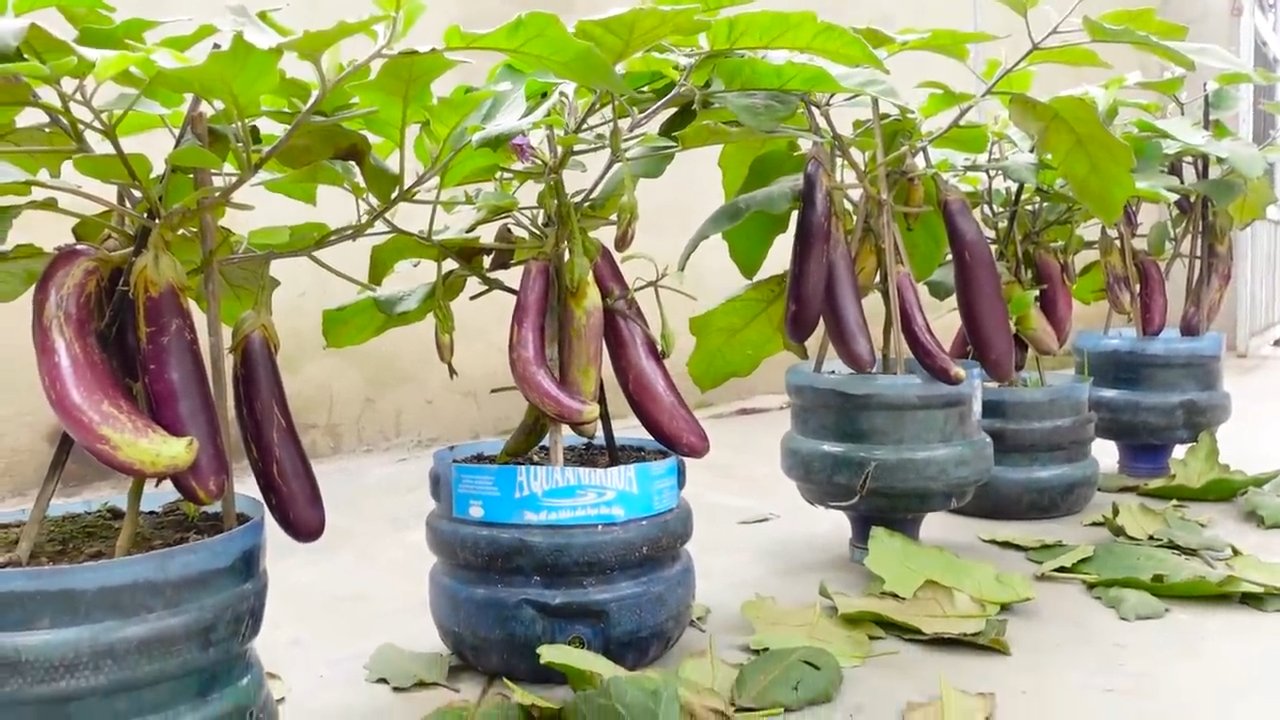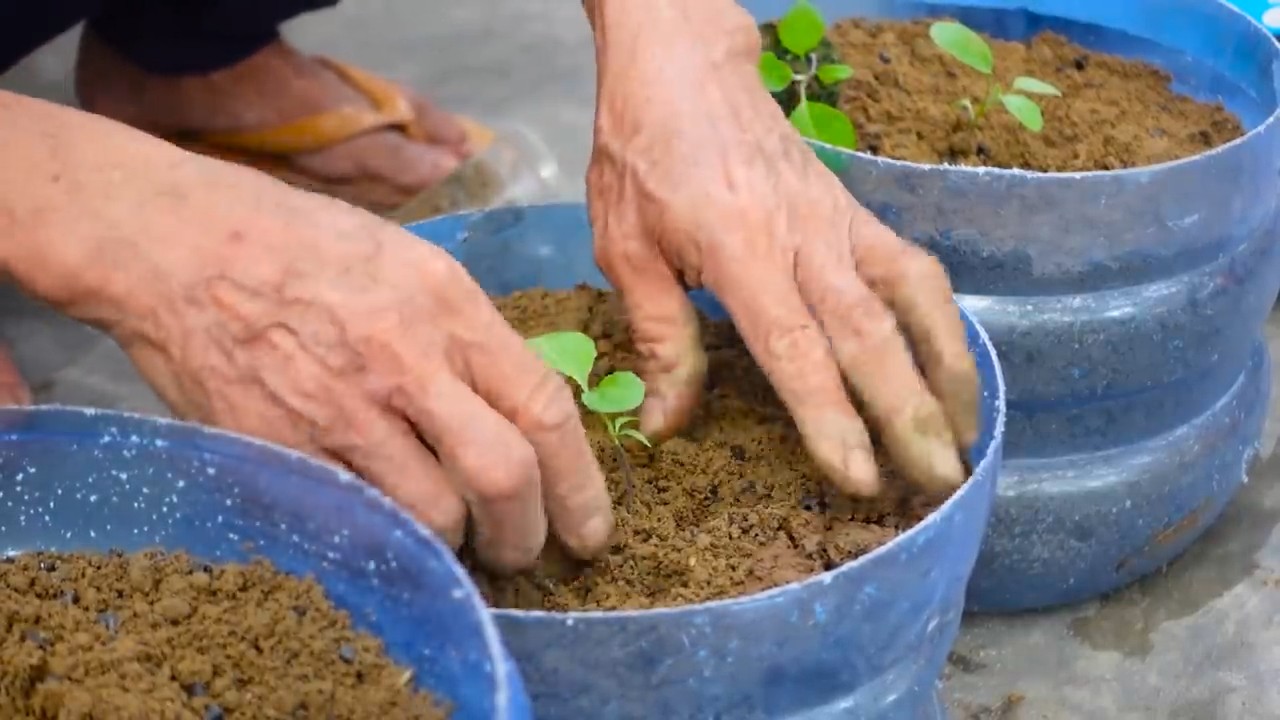Growing Eggplants Step by Step: Unlock the Secrets to a Bountiful Harvest!
Have you ever dreamed of strolling through your backyard, plucking a perfectly ripe, glossy eggplant straight from the vine? I know I have! There’s something incredibly satisfying about nurturing a plant from a tiny seed to a thriving, fruit-bearing beauty. Eggplants, with their rich history dating back to ancient Asia, have been a culinary staple for centuries. From the Mediterranean’s moussaka to Asia’s stir-fries, this versatile vegetable adds depth and flavor to countless dishes.
But let’s be honest, growing eggplants step by step can sometimes feel a little daunting. They can be a bit finicky, demanding specific conditions to truly flourish. That’s where this guide comes in! I’m going to share my tried-and-true tips and tricks, breaking down the process into easy-to-follow steps. Whether you’re a seasoned gardener or a complete beginner, you’ll discover how to cultivate healthy, productive eggplant plants right in your own backyard.
Why is this so important? Because store-bought eggplants simply can’t compare to the flavor and freshness of homegrown ones. Plus, you’ll have the satisfaction of knowing exactly where your food comes from and that it’s free from harmful pesticides. So, grab your gardening gloves, and let’s embark on this exciting journey of growing eggplants step by step!

Growing Eggplants Yourself: Your Comprehensive DIY Guide
Hello, garden friends! I love eggplants, and there’s nothing better than growing them yourself. The taste of freshly harvested, sun-ripened eggplants is simply unbeatable. In this article, I will show you step-by-step how to successfully grow eggplants in your own garden or even on your balcony. Don’t worry, it’s easier than you think!
What You Need for Growing Eggplants:
- Eggplant seeds or young plants: Choose varieties that are suitable for your climate. There are so many great types, from the classic dark purple varieties to white, striped, or even green eggplants.
- Seedling pots or trays: For starting indoors.
- Seed starting mix: Special soil for starting seeds that is low in nutrients and loose.
- Pots (optional): If you want to grow the eggplants in pots.
- Garden soil: Good, nutrient-rich garden soil for the bed or pots.
- Compost or organic fertilizer: To enrich the soil.
- Stakes or trellises: Eggplant plants can get quite large and need support.
- Watering can or garden hose: for regular watering.
- Pruning shears: For pinching out and harvesting.
- Mulch material (optional): To keep the soil moist and suppress weeds.
- Pest control (optional): Depending on the region and infestation.
Sowing and Starting Indoors (approx. 8-10 weeks before the last frost):
Eggplants need a long growing season, so starting them indoors is essential.
- Prepare the seedling pots: Fill the seedling pots or trays with seed starting mix. Press the soil down lightly.
- Sow the seeds: Place 1-2 eggplant seeds in each pot. Cover the seeds with a thin layer of soil (approx. 0.5 cm).
- Watering: Moisten the soil gently with a spray bottle or watering can. The soil should be moist, but not wet.
- Location: Place the seedling pots in a warm, bright place. A temperature of 22-25°C is ideal for germination. A heating mat can help maintain the temperature.
- Germination: Germination usually takes 1-2 weeks. Keep the soil moist during this time.
- Pricking out: Once the seedlings have 2-3 true leaves, you can prick them out. This means you remove the weaker plants and transplant the remaining ones into larger pots. Use regular garden soil enriched with compost for this.
Preparing the Bed or Pots:
Eggplants love a sunny spot and nutrient-rich, well-drained soil.
- Choose a location: Choose a sunny spot that gets at least 6-8 hours of sun per day.
- Soil preparation: Loosen the soil thoroughly and remove weeds and stones.
- Soil improvement: Work compost or organic fertilizer into the soil to enrich it with nutrients. Eggplants are heavy feeders and need a lot of nutrients.
- Prepare pots (optional): If you want to grow eggplants in pots, choose pots with a diameter of at least 30 cm. Fill the pots with garden soil enriched with compost.
Planting Out the Eggplants:
As soon as there is no more danger of frost (usually mid-May), you can plant the eggplants outdoors.
- Hardening off: Before you plant the eggplants out, you should harden them off for a few days. Place the plants outdoors during the day and bring them back in at night. This will acclimate them to the outdoor conditions.
- Planting distance: Plant the eggplants in the bed with a distance of 45-60 cm between them. In pots, each plant should have its own pot.
- Planting: Dig a hole large enough to accommodate the root ball of the eggplant plant. Place the plant in the hole and fill it with soil. Press the soil down lightly.
- Watering: Water the eggplants thoroughly after planting.
- Support: Place a stake next to each eggplant plant and tie it to the stake. Eggplant plants can get quite large and need support to keep from breaking.
Caring for the Eggplant Plants:
Regular care is important for a rich harvest.
- Watering: Water the eggplants regularly, especially during dry periods. The soil should always be moist, but not wet. Avoid watering the leaves, as this can promote fungal diseases.
- Fertilizing: Fertilize the eggplants every 2-3 weeks with an organic fertilizer or compost tea.
- Pinching out: Regularly remove the side shoots (suckers) that form in the leaf axils. This makes the plant stronger and produces more fruit. Leave only the main shoot and a few side shoots.
- Mulching (optional): Cover the soil around the eggplant plants with mulch material, such as straw or wood chips. Mulch keeps the soil moist, suppresses weeds, and protects the fruit from dirt.
- Pest control: Regularly check the eggplant plants for pests such as aphids, Colorado potato beetles, or spider mites. If necessary, you can use organic pesticides.
Harvesting the Eggplants:
The eggplants are ready to harvest when they have a shiny skin and feel firm.
- Harvest time: The harvest time usually begins in July or August, depending on the variety and climate.
- Harvesting method: Cut the eggplants with pruning shears. Leave a small stem on the fruit.
- Regular harvesting: Harvest the eggplants regularly to encourage the production of new fruit.
- Storage: Eggplants do not keep for long. Store them in the refrigerator and use them within a few days.
Common Problems and Solutions:
- Aphids: Spray the plants with a soap and water solution.
- Colorado potato beetles: Pick off the beetles and larvae or use a biological insecticide.
- Fungal diseases: Ensure good ventilation and avoid watering the leaves. If necessary, you can use a fungicide.
- Fruit drop: Irregular watering or nutrient deficiency can lead to fruit drop. Ensure even watering and regular fertilization.
Additional Tips:
Crop rotation: Don’t plant eggplants in the same spot every year.
Variety selection: Choose eggplant varieties that are suitable for your climate. There are many different varieties that differ in size, color, and taste.

Conclusion
So, there you have it – a comprehensive guide to successfully growing eggplants, step by step! We’ve covered everything from selecting the right seeds and preparing the soil to nurturing your seedlings and harvesting those beautiful, glossy fruits. But why is this DIY approach a must-try? Because growing your own eggplants isn’t just about saving money at the grocery store; it’s about connecting with nature, understanding the food you eat, and experiencing the immense satisfaction of nurturing something from seed to table.
Think about it: store-bought eggplants, while convenient, often lack the vibrant flavor and freshness of homegrown varieties. Plus, you have no control over the pesticides or growing practices used. By embracing this DIY project, you’re guaranteeing yourself organic, delicious eggplants bursting with flavor. You’re also reducing your carbon footprint by eliminating transportation costs and supporting sustainable gardening practices.
But the benefits don’t stop there. Growing eggplants is a fantastic learning experience, especially for children. It teaches patience, responsibility, and an appreciation for the natural world. And let’s not forget the sheer joy of watching your plants thrive and produce an abundance of delicious fruit.
Now, let’s talk about variations. While we’ve focused on a general approach, there’s plenty of room for experimentation. Consider trying different eggplant varieties, such as the classic ‘Black Beauty,’ the slender ‘Japanese Long,’ or the colorful ‘Rosa Bianca.’ Each variety offers a unique flavor and texture, adding diversity to your culinary creations.
You can also experiment with different growing methods. If you live in a colder climate, consider starting your seeds indoors earlier or using row covers to protect your plants from frost. If space is limited, try growing eggplants in containers on your patio or balcony. Just be sure to choose a large enough container and provide adequate support for the plants.
Another variation to consider is companion planting. Eggplants thrive when planted alongside certain herbs and vegetables, such as basil, thyme, and peppers. These companion plants can help deter pests, attract beneficial insects, and improve the overall health of your eggplant plants.
Ultimately, the best way to learn is by doing. So, don’t be afraid to get your hands dirty and experiment with different techniques. The most important thing is to have fun and enjoy the process.
We strongly encourage you to try this DIY trick and embark on your eggplant-growing journey. Whether you’re a seasoned gardener or a complete beginner, we’re confident that you’ll find it a rewarding and fulfilling experience. And once you’ve harvested your first crop of homegrown eggplants, be sure to share your experience with us! We’d love to hear about your successes, challenges, and favorite recipes. Share your photos and stories on social media using #HomegrownEggplants and let’s inspire others to embrace the joy of gardening.
Remember, growing your own food is not just a trend; it’s a way of life. It’s a way to connect with nature, nourish your body, and create a more sustainable future. So, grab your seeds, prepare your soil, and get ready to experience the magic of growing your own eggplants. You won’t regret it! This **growing eggplants** guide is your first step to a bountiful harvest.
Frequently Asked Questions (FAQ)
What is the best time to start growing eggplants?
The best time to start growing eggplants depends on your climate. In warmer climates with long growing seasons, you can start seeds directly outdoors after the last frost. However, in cooler climates, it’s best to start seeds indoors 6-8 weeks before the last expected frost. This gives the seedlings a head start and ensures they have enough time to mature and produce fruit before the end of the growing season. A good rule of thumb is to wait until the soil temperature reaches at least 70°F (21°C) before transplanting seedlings outdoors.
How much sunlight do eggplants need?
Eggplants require at least 6-8 hours of direct sunlight per day to thrive. Insufficient sunlight can lead to leggy plants, reduced fruit production, and increased susceptibility to pests and diseases. Choose a sunny location in your garden where your eggplants will receive ample sunlight throughout the day. If you’re growing eggplants in containers, make sure to place them in a sunny spot on your patio or balcony.
What type of soil is best for growing eggplants?
Eggplants prefer well-drained, fertile soil that is rich in organic matter. The ideal soil pH is between 6.0 and 7.0. Before planting, amend your soil with compost, aged manure, or other organic materials to improve its fertility and drainage. You can also add a slow-release fertilizer to provide your eggplants with the nutrients they need throughout the growing season. Avoid heavy clay soils, as they can become waterlogged and inhibit root growth.
How often should I water my eggplants?
Eggplants need consistent moisture to thrive, especially during hot, dry weather. Water your eggplants deeply and regularly, aiming to keep the soil consistently moist but not waterlogged. Check the soil moisture regularly by sticking your finger into the soil. If the top inch of soil feels dry, it’s time to water. Avoid overhead watering, as it can promote fungal diseases. Instead, water at the base of the plants, using a soaker hose or drip irrigation system.
What are some common pests and diseases that affect eggplants?
Eggplants are susceptible to a variety of pests and diseases, including aphids, flea beetles, spider mites, blossom-end rot, and fungal diseases. To prevent pest and disease problems, practice good garden hygiene, such as removing weeds and debris from around your plants. Inspect your plants regularly for signs of pests or diseases and take action promptly if you notice any problems. You can use organic pest control methods, such as insecticidal soap or neem oil, to control pests. To prevent fungal diseases, ensure good air circulation around your plants and avoid overhead watering.
How do I know when my eggplants are ready to harvest?
Eggplants are typically ready to harvest when they are firm, glossy, and have reached their mature size and color. The skin should be smooth and unblemished. Gently press the skin of the eggplant; if it springs back slightly, it’s ripe. If it feels hard and unyielding, it’s not quite ready. Use a sharp knife or pruning shears to cut the eggplant from the plant, leaving a short stem attached. Harvest eggplants regularly to encourage continued fruit production. Overripe eggplants can become bitter and seedy.
Can I grow eggplants in containers?
Yes, eggplants can be successfully grown in containers, provided you choose a large enough container and provide adequate support for the plants. Choose a container that is at least 12-18 inches in diameter and depth. Use a well-draining potting mix and amend it with compost or other organic materials. Place the container in a sunny location and water regularly. You may also need to stake or cage your eggplants to provide support as they grow. Container-grown eggplants may require more frequent fertilization than those grown in the ground.
How can I encourage more fruit production on my eggplant plants?
To encourage more fruit production on your eggplant plants, make sure they are receiving adequate sunlight, water, and nutrients. Fertilize your plants regularly with a balanced fertilizer or a fertilizer specifically formulated for fruiting vegetables. Prune your plants to remove suckers and promote air circulation. Hand-pollinate the flowers if necessary, especially if you’re growing eggplants indoors or in a greenhouse. Harvest eggplants regularly to encourage continued fruit production.
What are some good companion plants for eggplants?
Good companion plants for eggplants include basil, thyme, oregano, peppers, tomatoes, and marigolds. Basil helps repel pests and attract beneficial insects. Thyme and oregano also repel pests and improve the flavor of eggplants. Peppers and tomatoes are in the same family as eggplants and can benefit from similar growing conditions. Marigolds repel nematodes and other soil pests. Avoid planting eggplants near fennel, as it can inhibit their growth.
How do I deal with blossom-end rot on my eggplants?
Blossom-end rot is a common problem that affects eggplants, tomatoes, and peppers. It is caused by a calcium deficiency in the developing fruit. To prevent blossom-end rot, ensure that your soil is rich in calcium and that your plants are receiving consistent moisture. You can add lime or gypsum to your soil to increase its calcium content. Avoid over-fertilizing with nitrogen, as it can interfere with calcium uptake. If you notice blossom-end rot on your eggplants, remove the affected fruit and adjust your watering and fertilization practices.




Leave a Comment